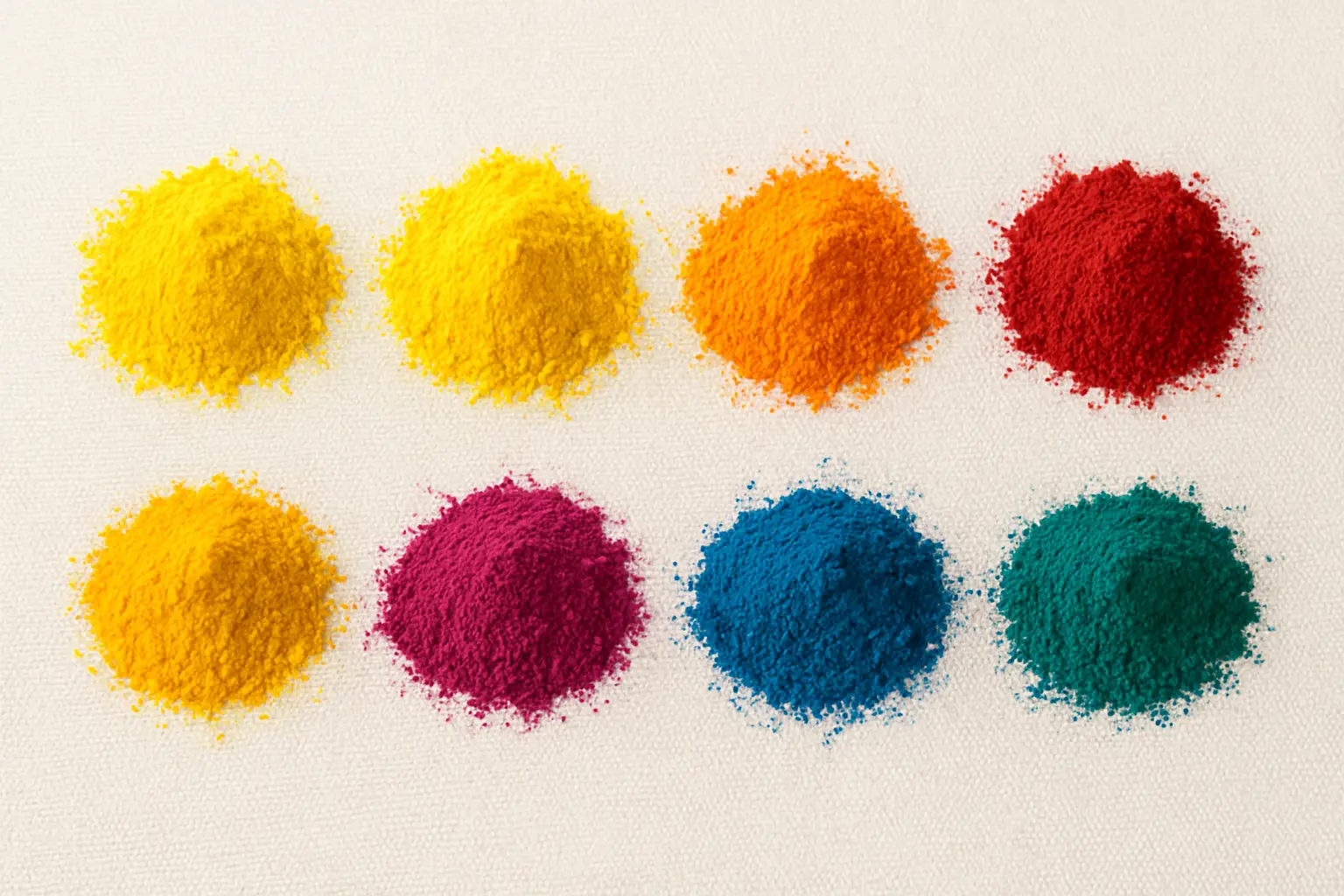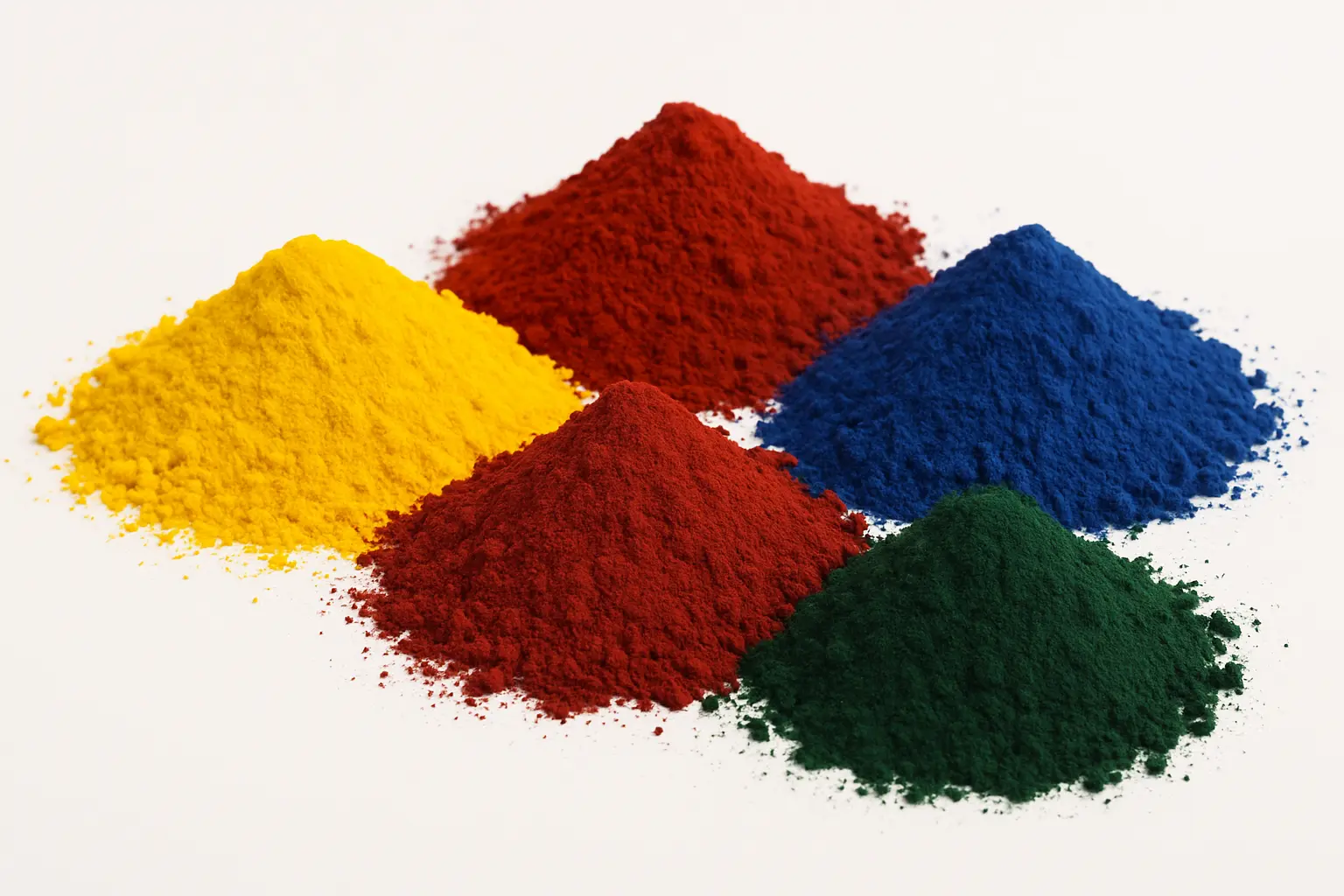Los colorantes naturales son pigmentos derivados de fuentes naturales como plantas, animales o minerales. Se utilizan ampliamente como alternativas a los colorantes sintéticos en industrias como la alimentaria, la cosmética y la farmacéutica. Si bien ofrecen varios beneficios, también hay algunas limitaciones que se deben tener en cuenta.

Ventajas de los colorantes naturales
- Mayor seguridad
En comparación con los colorantes sintéticos, los colorantes naturales suelen considerarse más seguros, sobre todo en aplicaciones alimentarias. Dado que se derivan de plantas o animales comestibles, suponen un menor riesgo de alergias o toxicidad. Por ejemplo, el rojo de remolacha y los carotenoides no solo aportan color, sino que también ofrecen beneficios nutricionales. - Ecológico
La producción de colorantes naturales tiene una huella ambiental menor. Las materias primas son renovables y el proceso de extracción requiere menos tratamientos químicos, lo que reduce el impacto ambiental. Los residuos de la producción de pigmentos naturales son más fáciles de gestionar y menos dañinos para el medio ambiente. - Preferencia del consumidor
A medida que los consumidores se vuelven más conscientes de la salud y el medio ambiente, existe una creciente demanda de productos con ingredientes naturales. Los colorantes naturales se perciben como más saludables y “más limpios”, lo que los hace populares en las industrias alimentaria y cosmética. Los consumidores suelen preferir las etiquetas que indican el uso de colorantes naturales. - Beneficios para la salud
Algunos pigmentos naturales ofrecen más que solo color; también brindan beneficios para la salud. Por ejemplo, los carotenoides (que producen tonos anaranjados y amarillos) tienen propiedades antioxidantes que ayudan a proteger las células del daño de los radicales libres. Las antocianinas (pigmentos azules y morados) pueden mejorar la salud vascular, reducir la inflamación y ofrecer beneficios antioxidantes.
Desventajas de los colorantes naturales
- Menor estabilidad
Los pigmentos naturales son más sensibles a factores ambientales como la luz, el calor, el oxígeno y los cambios de pH, lo que hace que se desvanezcan o pierdan su vitalidad. Por ejemplo, el licopeno (presente en los tomates) es muy sensible a la luz y al oxígeno, lo que puede degradar su color durante el almacenamiento. Se necesitan condiciones especiales de envasado y almacenamiento para mantener la estabilidad, lo que aumenta la complejidad y el costo de la producción. - Gama de colores limitada
La paleta de colores disponible a partir de fuentes naturales es limitada, en particular para los azules, verdes y negros vibrantes. Esto limita el uso de pigmentos naturales en ciertas aplicaciones. Por ejemplo, la producción de caramelos coloridos o diseños de envases a menudo requiere tintes sintéticos para lograr colores brillantes y diversos que los pigmentos naturales no pueden lograr fácilmente. - Costo más alto
La extracción de colorantes naturales es costosa y requiere mucho trabajo debido a la complejidad del proceso y a los rendimientos limitados. Además, el suministro de pigmentos naturales puede ser irregular, influenciado por factores estacionales y ambientales, lo que aumenta aún más los costos. Por ejemplo, tanto el azafrán como el carmín son caros de producir debido a los procesos de extracción que requieren mucha mano de obra. - Posibles problemas de olor o sabor
Algunos colorantes naturales conservan el olor o el sabor de sus materiales originales, lo que puede afectar las cualidades sensoriales del producto final. Por ejemplo, los pigmentos azules a base de espirulina pueden tener un ligero olor a algas marinas, que podría resultar indeseable en determinados alimentos o cosméticos.
Áreas de aplicación de los colorantes naturales
- Industria de alimentos
Los colorantes naturales se utilizan ampliamente en productos alimenticios para mejorar la apariencia y el atractivo. Algunos ejemplos comunes incluyen:- Remolacha roja:Se utiliza en productos cárnicos, bebidas y helados para crear tonos rojos o rosados.
- Oleorresina de pimentón:Se aplica en salsas, condimentos, jamón y embutidos para obtener un color rojo brillante.
- Carotenoides:Se utiliza en productos lácteos, bebidas y productos horneados para obtener tonos anaranjados y amarillos.
- Flavonoides:Extraído de frutos cítricos, utilizado en dulces y bebidas para proporcionar tonalidades amarillas.
- Clorofila:Se aplica en bebidas, confitería y productos lácteos para crear tonos verdes.
- Industria cosmética
Los colorantes naturales son populares en los cosméticos, especialmente en lápices labiales, rubores, bases y sombras de ojos. Los consumidores prefieren los ingredientes naturales por los beneficios percibidos para la piel y el menor riesgo de irritación. Algunos ejemplos incluyen:- Carmín:Un tinte rojo extraído de los insectos cochinilla, comúnmente utilizado en lápices labiales y rubores.
- Antocianinas:Extraído de arándanos y col morada, se utiliza en sombras de ojos y rubores para tonos morados o azules.
- Pigmentos minerales:Como el dióxido de titanio y el óxido de hierro, utilizados en bases y correctores para tonos de piel naturales.
- Industria farmacéutica
Los colorantes naturales se utilizan para dar color a productos farmacéuticos como comprimidos y cápsulas, lo que ayuda a diferenciar entre medicamentos y mejora el cumplimiento del tratamiento por parte del paciente. Algunos ejemplos son:- Carotenoides:Se utiliza en cápsulas de gel blando y recubrimientos de tabletas para proporcionar colores brillantes para un mejor reconocimiento en el mercado.
- Clorofilina de cobre:Se aplica en recubrimientos de pastillas, ofreciendo tonalidades verdes a la vez que mejora la estabilidad del producto.
- Arroz de levadura roja:Se utiliza en recubrimientos farmacéuticos para proporcionar un tono rojo o morado.
- Tintes textiles
Si bien los tintes sintéticos dominan la industria textil, los colorantes naturales aún se utilizan en nichos de mercado, en particular para la moda ecológica y sostenible. Algunos ejemplos son:- Índigo:Extraído de las plantas índigo, se utiliza para teñir la mezclilla y otras telas de azul.
- Raíz de rubia:Un tinte rojo natural utilizado para colorear telas.
- Curcumina:Extraído de la cúrcuma, se utiliza para obtener tonos amarillos o anaranjados en los textiles.
Tendencias futuras para colorantes naturales
A medida que la conciencia ambiental y la demanda de productos naturales y más saludables continúan creciendo, el uso de colorantes naturales se está expandiendo. Las tendencias futuras clave incluyen:
- Avances tecnológicos:Las biotecnologías como la fermentación microbiana y las reacciones enzimáticas están mejorando la estabilidad, el rendimiento y la rentabilidad de los pigmentos naturales.
- Aplicaciones intersectoriales:Más allá de los usos tradicionales en alimentos, cosméticos y productos farmacéuticos, los colorantes naturales se están explorando en áreas como materiales de embalaje y recubrimientos ecológicos.
- Expansión funcional:Además de colorear, se están desarrollando pigmentos naturales por sus beneficios para la salud, como antioxidantes y propiedades antienvejecimiento, abriendo oportunidades en alimentos funcionales y suplementos.
Para obtener más información sobre los colorantes naturales y cómo pueden mejorar las formulaciones de sus productos, visite Sitio web de WPA Chem.









